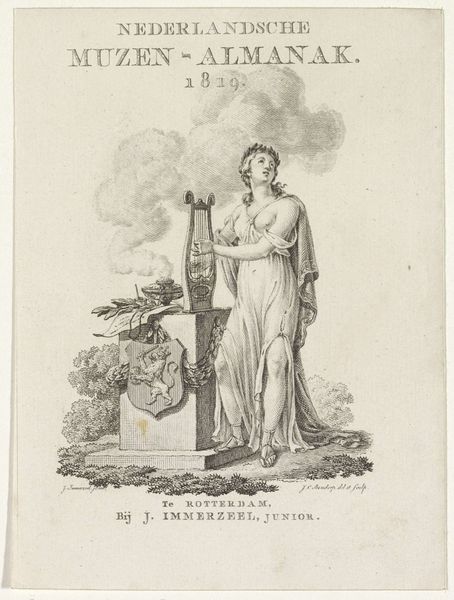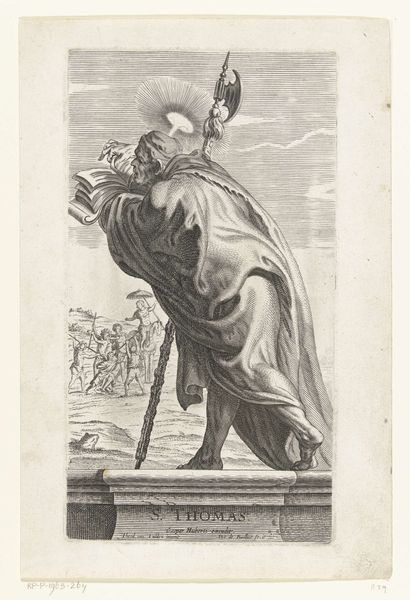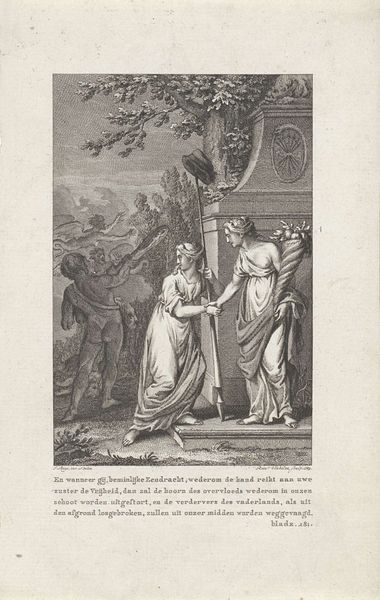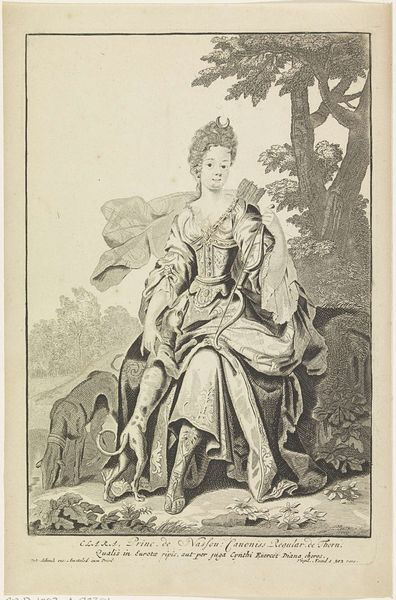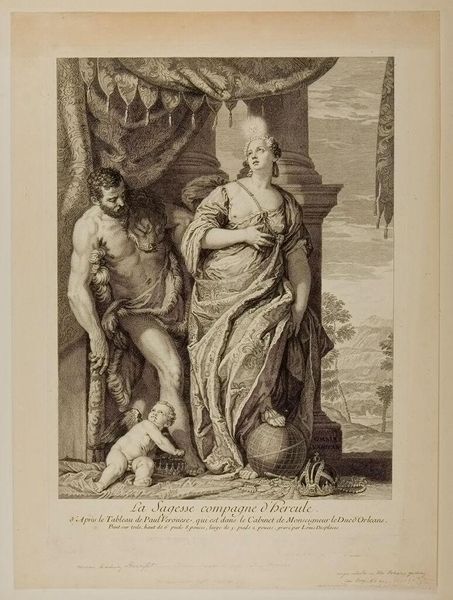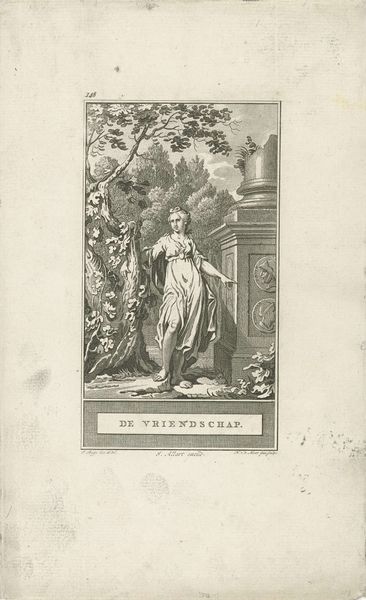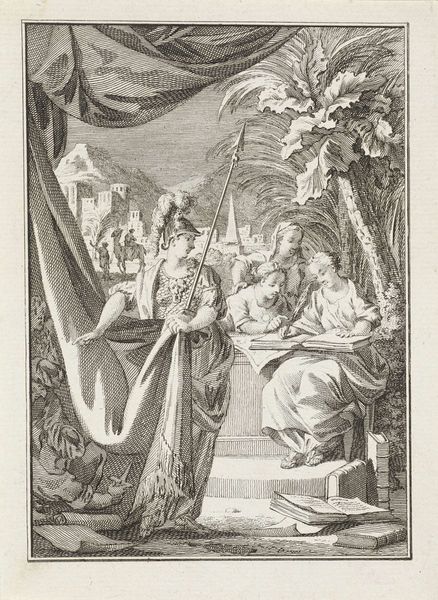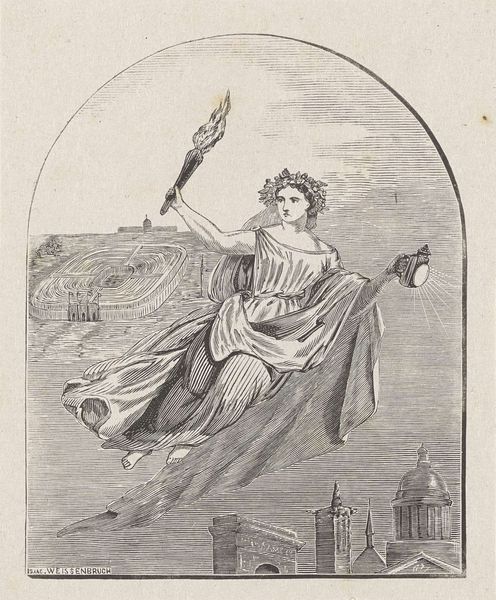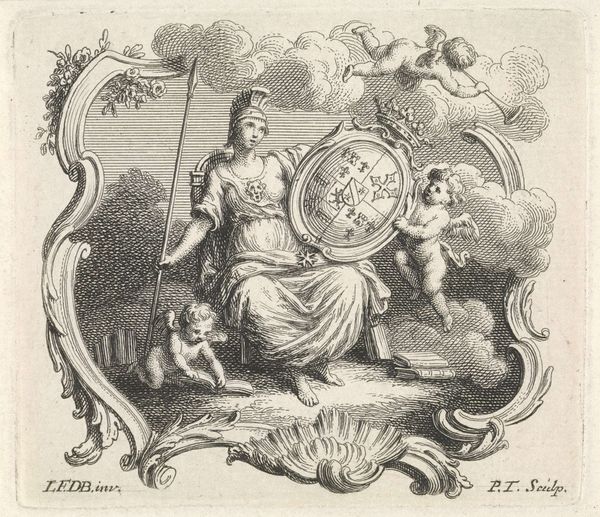
print, engraving
#
neoclacissism
#
aged paper
#
allegory
# print
#
old engraving style
#
classical-realism
#
figuration
#
line
#
history-painting
#
engraving
Dimensions: height 114 mm, width 84 mm
Copyright: Rijks Museum: Open Domain
This is Johannes Christiaan Bendorp’s title page for the 1824 edition of the Dutch “Muzen-Almanak”, or Muses Almanac, now held at the Rijksmuseum. Engravings such as these, from the early 19th century, provide insight into the cultural values of the Netherlands at the time. The figure depicted is a classical muse, a representation of artistic inspiration and creativity. She sits on a stone plinth, a laurel wreath adorns her head and she is posed holding a lyre. What does it mean to depict the muse as a woman? This imagery reinforced the idea of women as symbols, or passive figures of inspiration, rather than active creators themselves. The classical style conveys the aesthetic preferences of the time. But it also tells us of the desire to connect with a rich cultural past while shaping a sense of national identity. These Almanacs served as mirrors reflecting the artistic and intellectual life of the Netherlands. They are at once sentimental and political, showing us how art shapes our understanding of who we are, and who we aspire to be.
Comments
No comments
Be the first to comment and join the conversation on the ultimate creative platform.
